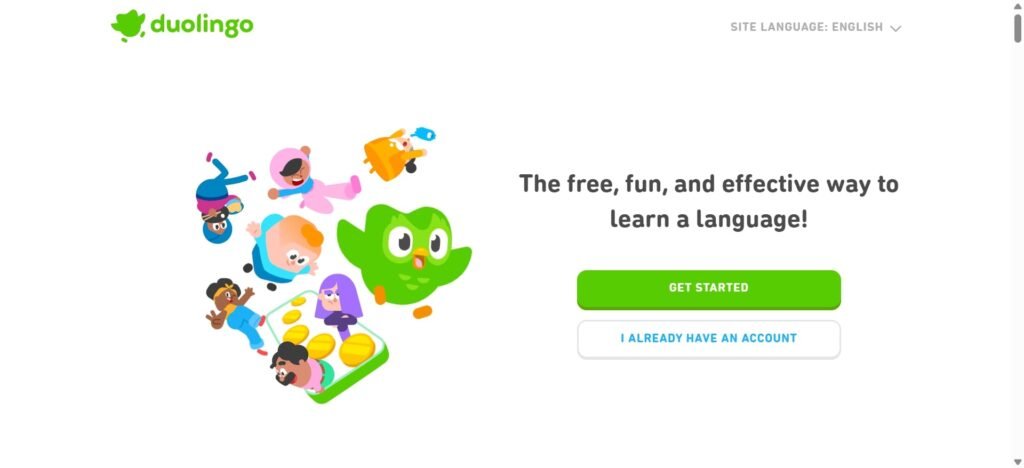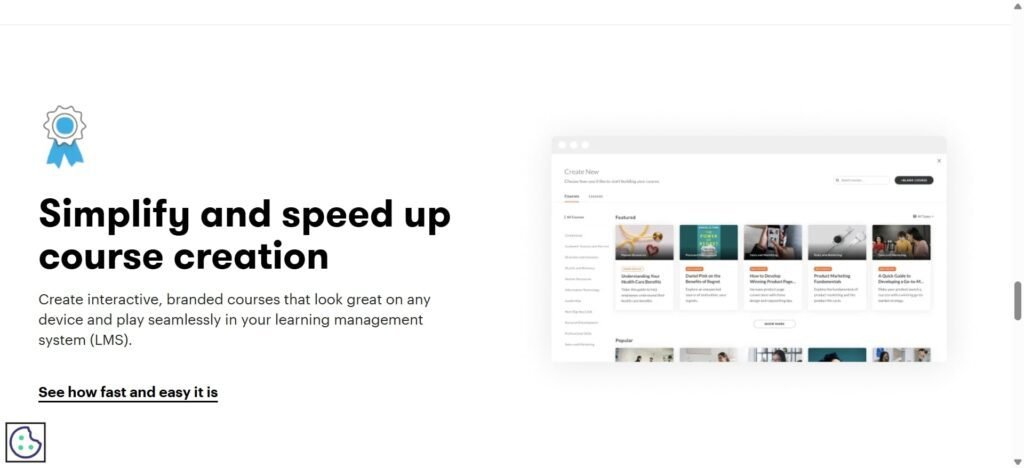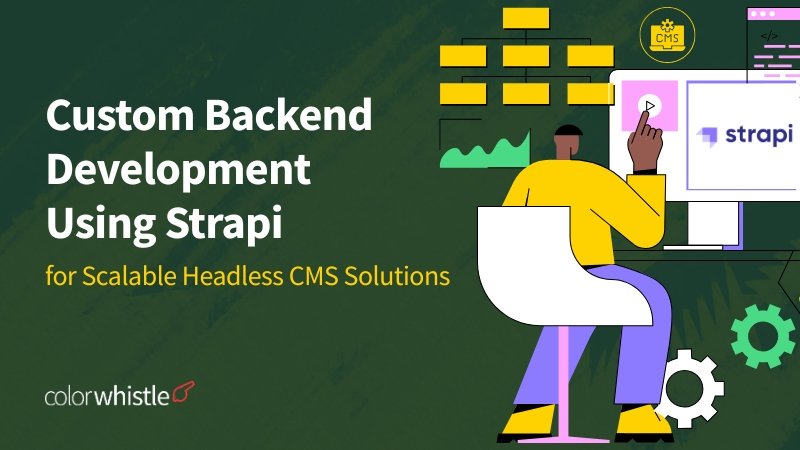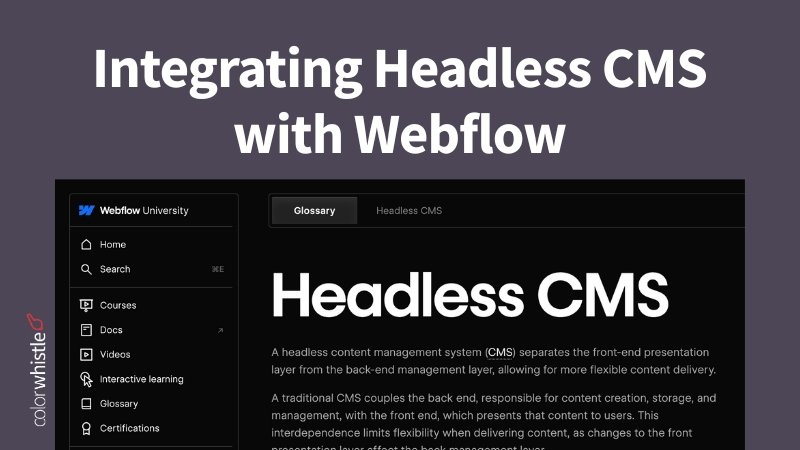A staggering 90% of organizations now offer some form of e-learning, with 80% providing online training solutions to their workforce. This reflects a cultural shift towards embracing digital learning methods.
Most people overlook this: They focus on adding e-learning tools to Webflow without considering user engagement. However, the real impact comes from creating an interactive experience that adapts to user needs.
Want to go beyond the basics and truly engage your audience? Check out our latest blog on Revolutionizing LMS with Webflow to learn how Webflow makes creating an engaging e-learning experience easy.
TL;DR
E-learning tools enhance digital education by offering engaging and interactive learning experiences. With trends like gamification, microlearning, AI-driven personalization, and immersive AR/VR, modern e-learning is more dynamic than ever. Webflow enables seamless integration of these tools to create a highly interactive learning platform.
Key E-Learning Trends
- Gamification – Increases user involvement through rewards like points, badges, and leaderboards
- Microlearning – Delivers bite-sized lessons for better retention
- AI & Personalization – Adapts content based on learner behavior
- AR/VR Learning – Creates immersive, hands-on experiences
- Social & Mobile Learning – Encourages collaboration and accessibility
How to Integrate E-Learning Tools into Webflow?
- Select the Right Tools – Identify quizzes, videos, AI-powered solutions, and more
- Embed Third-Party Content – Use Webflow’s embed feature for seamless integration
- Utilize Webflow CMS – Manage and update course materials effortlessly
- Utilize Animations & Interactions – Enhance engagement with dynamic content
- Implement API-Based Solutions – Enable advanced AI-driven learning experiences
- Optimize for Mobile & Accessibility – Ensure responsive and inclusive design
Need Custom Development?
Webflow is powerful, but integrating advanced e-learning tools may require expert development. ColorWhistle can help you build a fully interactive and scalable e-learning platform tailored to your needs
What are the Major Trends in E-Learning Tools
The e-learning industry constantly evolves, with new trends shaping how learners engage with content. Some of the most significant trends in e-learning tools include

Gamification
Gamification incorporates game-like elements such as points, badges, leaderboards, and challenges into learning modules. This approach increases engagement and motivation by making the learning process more enjoyable. Popular platforms like Kahoot! and Duolingo use gamification to enhance retention and participation.
Microlearning
Microlearning focuses on delivering small, easily digestible learning modules. Instead of lengthy courses, learners consume bite-sized content that fits into their daily schedules. Platforms like LinkedIn Learning and Udemy offer short video lessons that help learners quickly acquire new skills.
Artificial Intelligence (AI) and Personalization
AI-powered e-learning tools analyze user behavior and adapt content accordingly. These platforms provide personalized recommendations, ensuring that learners receive relevant material based on their progress and preferences.
Also Read
Mobile Learning (M-Learning)
Many e-learning tools now offer mobile-friendly versions, allowing users to access courses anytime, anywhere. Apps like Google Classroom and Blackboard enable seamless learning on the go.
Interactive Content
Interactive e-learning tools engage users through elements like quizzes, simulations, and drag-and-drop activities. This hands-on approach improves retention and understanding. Tools like Articulate 360 and Adobe Captivate allow educators to create dynamic and interactive courses.
Social Learning
Social learning integrates peer collaboration into e-learning environments through discussion forums, group projects, and social media interactions. Platforms like Microsoft Teams encourage knowledge-sharing and teamwork among learners.
Immersive Learning with AR/VR
Augmented Reality (AR) and Virtual Reality (VR) create highly immersive learning experiences, allowing learners to interact with 3D environments. These tools are widely used in medical training, engineering simulations, and virtual field trips. Technologies like Oculus VR offer hands-on learning through simulations.
Learning Analytics and Data-Driven Insights
E-learning platforms now incorporate learning analytics to track learner progress, engagement levels, and performance. Tools like Google Analytics for LMS and Tableau provide educators with valuable insights to enhance course effectiveness and learner outcomes.
Adaptive Learning Technologies
Adaptive learning tools use AI and machine learning to modify course content in real time based on the learner’s progress. This approach ensures that each student receives a personalized experience. Platforms like Smart Sparrow and Knewton use adaptive learning to optimize student engagement.
What are the Examples of E-Learning Tools?
Various types of e-learning tools serve different educational purposes. Here are some common examples:
Quizzes and Assessments
Platforms like Quizizz, Socrative, and Google Forms help educators assess learners’ understanding through interactive quizzes and tests.
Infographics and Visual Aids
Infographics simplify complex information into visually appealing formats. Tools like Canva and Piktochart allow educators to create compelling visual content to enhance learning.
Video-Based Learning
Video tutorials make learning more engaging. Platforms like YouTube, Vimeo, and Loom provide a way to create and distribute educational videos efficiently.
Learning Management Systems (LMS)
LMS platforms like Moodle, Blackboard, and Teachable streamline course creation, student management, and progress tracking for educators and organizations.
Collaboration and Communication Tools
Tools like Slack, Microsoft Teams, and Zoom facilitate real-time discussions, group projects, and virtual classrooms.
Also Read
Augmented Reality (AR) and Virtual Reality (VR) Tools
Technologies like Google Expeditions and Oculus VR offer immersive learning experiences that help learners grasp complex subjects through hands-on simulations.
Steps to Perform Integration of E-Learning Tools into Webflow
All these e-learning tools can be seamlessly integrated into Webflow, a powerful website development platform known for its flexibility and customization capabilities. Whether you need to embed quizzes, host interactive infographics, or incorporate AI-driven course recommendations, Webflow allows for dynamic content integration.
Step-by-Step Guide to the Integration of E-Learning Tools into Webflow
- Choose the Right E-Learning Tools – Identify which e-learning tools you need, such as quizzes, videos, or interactive infographics, based on your audience and objectives
- Embed Third-Party Tools – Many e-learning tools offer embedded codes (e.g., YouTube, Google Forms, and Kahoot!). Use Webflow’s embed element to integrate these tools directly into your website
- Use Webflow CMS for Course Content – Webflow’s CMS (Content Management System) allows you to structure and manage course materials, making it easier to update and organize content
- Utilize Webflow’s Interactions and Animations – Enhance the user experience by adding animations, hover effects, and transitions to make learning content more engaging
- Integrate API-Based E-Learning Solutions – Some advanced e-learning tools, like AI-powered LMS platforms, require API integration. Custom development may be needed to sync Webflow with these solutions
- Optimize for Mobile and Accessibility – Ensure your e-learning platform is mobile-friendly and accessible for all users by testing responsiveness and following accessibility guidelines
- Test and Iterate – Before launching, test the integration of e-learning tools within Webflow to ensure smooth functionality. Gather user feedback and make necessary adjustments
E-learning Tools Integration into Webflow Requires Custom Development, and ColorWhistle Can Help
Integrating e-learning tools into Webflow often requires custom development to ensure seamless functionality and user experience. Webflow’s no-code platform is powerful, but advanced features such as API integrations, dynamic content, and automation may require expert assistance.
ColorWhistle’s Webflow development services can help businesses and educators build highly engaging e-learning platforms by providing expert Webflow development and customized content solutions. With our expertise, you can maximize the potential of Webflow and create an interactive digital learning experience that meets your specific needs.
Wrap-Up
Adding e-learning tools to Webflow makes online learning more engaging and easy to use. Features like quizzes, videos, and interactive content help create a better learning experience. Trends like gamification, AI, and VR make lessons more fun and personalized. Some advanced features may need a custom setup, and experts can help make everything run smoothly.
Browse our ColorWhistle page for more related content and learn about our Webflow development services. To contact us and learn more about our services, please visit our Contact Us page.
What’s Next?
Now that you’ve had the chance to explore our blog, it’s time to take the next step and see what opportunities await!












